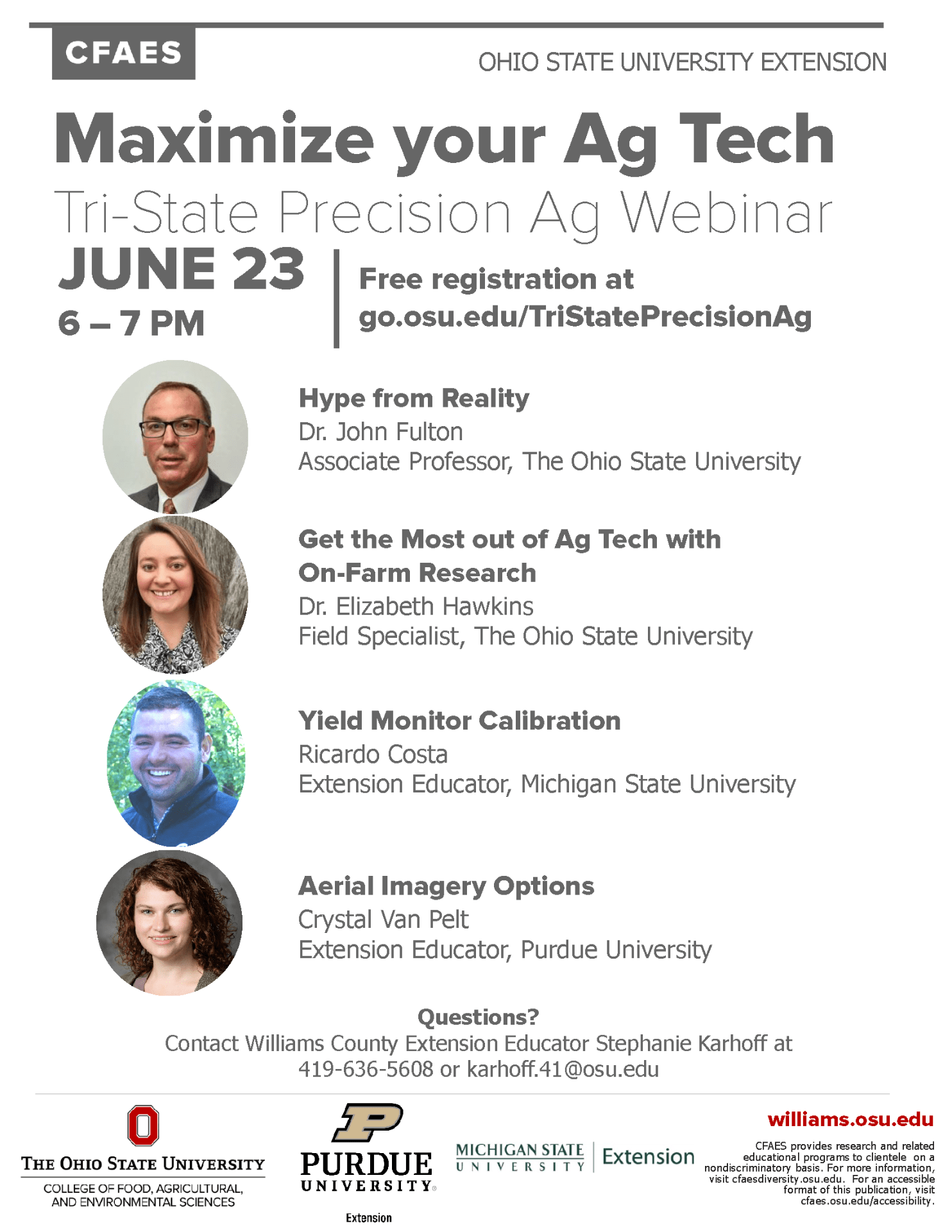By Stephanie Karhoff OSU Extension
Get the most out of your Ag Tech this year by joining experts from Ohio State University, Michigan State University, and Purdue University for the 2020 Tri-State Precision Ag Day via online webinar on June 23 at 6:00 p.m. Learn more about drone imaging, calibrating yield monitors, on-farm research, and emerging technologies.
Topics and speakers include:
Hype from Reality
Dr. John Fulton, Associate Professor, The Ohio State University
Get the Most out of Ag Tech with On-Farm Research
Dr. Elizabeth Hawkins, Field Specialist, The Ohio State University
Yield Monitor Calibration
Ricardo Costa, Extension Educator, Michigan State University
Aerial Imagery Options
Crystal Van Pelt, Extension Educator, Purdue University
Register for the webinar at go.osu.edu/TriStatePrecisionAg. Contact Agriculture & Natural Resources Extension Educator Stephanie Karhoff at 419-636-5608 or karhoff.41@osu.edu for more information.


